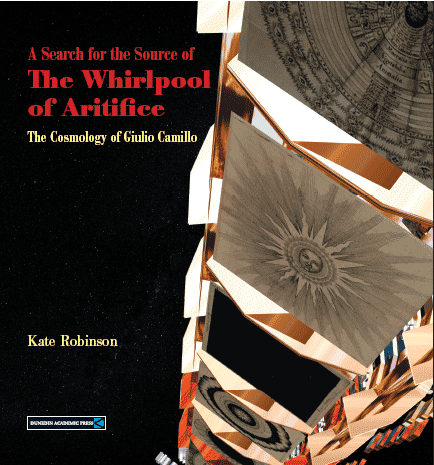KATE ROBINSON |
|||
|
|
|
Giulio Camillo was a poet, a scientist and an image-maker. Three months before he died Camillo dictated the text of his most important and secret work to his agent, Girolamo Muzio. Muzio's transcription of L'Idea del Theatro was eventually published in Florence in 1550. |
|
| Sculpture | |||
| Public Commissions | |||
| Bio/Contact | |||
| Home | |||
To purchase a copy on Amazon, click here.
|
|||
|
Camillo's secret, revealed in L'Idea, is about man's relationship to the heavens. Camillo envisaged a living, tangible network of relationships that holds the cosmos in being. Heavenly influences, in the form of 'celestial streams', rain down on the earth. Man is as much part of the earth as he is made up of the stars. Rocks and stones, earth, flowers and trees are alive and aware of their holy origin. The skin and hair of man is receptive to the flows of heavenly love. This is not all that is contained in L'Idea for Camillo believed that it was the sun and not the earth that has pride of place in the universe. Camillo dictated L'Idea a few months after publication of Copernicus' Revolutions of the Heavenly Spheres but Camillo did not use mathematics to prove his theories. Instead his conception of the universe is of a vast array of images. Thus the heavens are described by Camillo in terms of visual signs. Arising out of a dialogue with contemporary visual art, the aim of this work is to look at the connection between image and the art of science in the sixteenth century that produced such a man as Camillo. |
|
Published by
|
